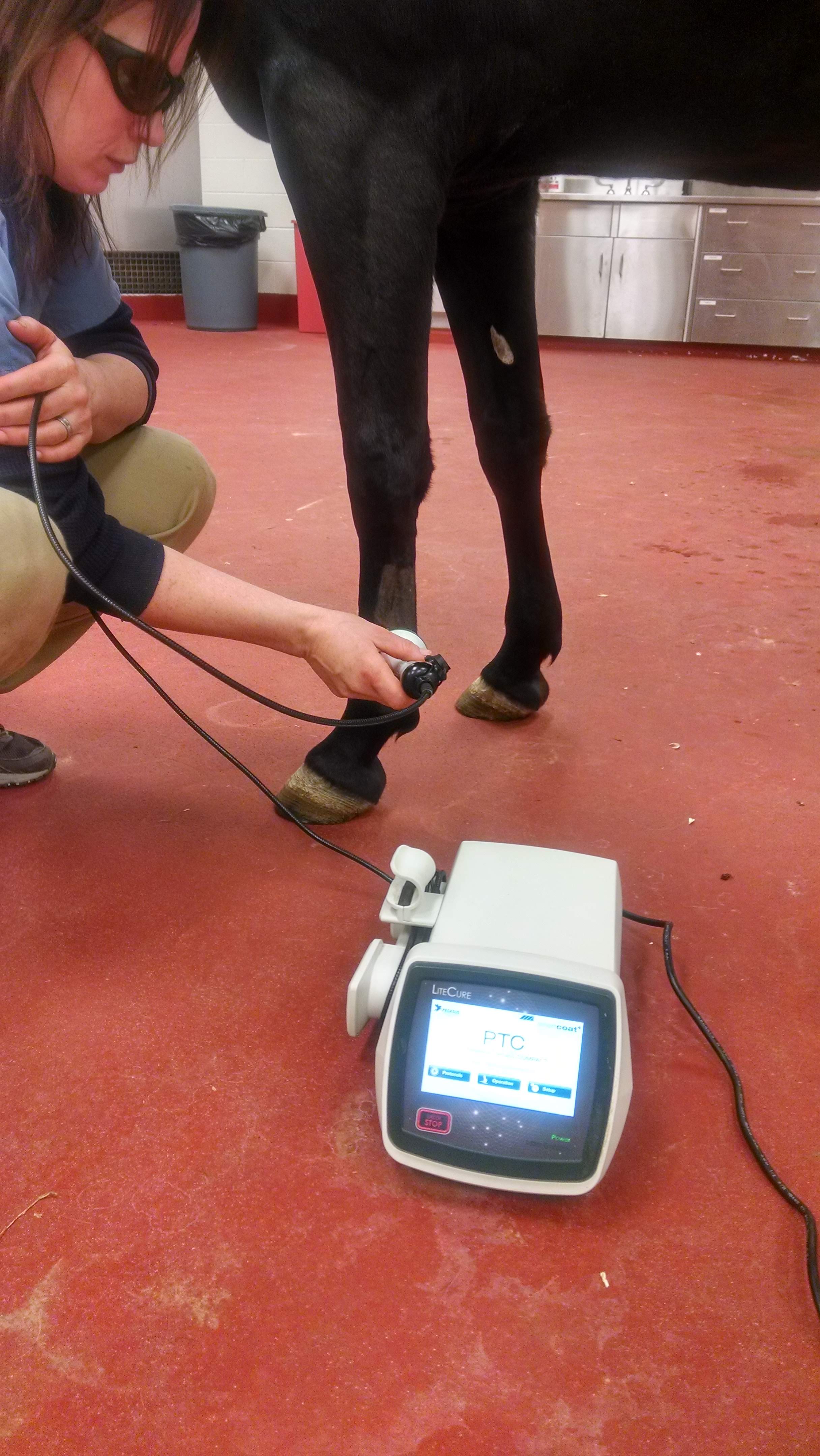Equine Therapy for Kid: Emotional and Behavioral Support Discussed
Equine Therapy for Kid: Emotional and Behavioral Support Discussed
Blog Article
Reviewing the Effectiveness of Laser Therapy in Horse Therapy for Injury Rehab
The assessment of laser treatment's performance in equine injury rehab depends upon numerous aspects, consisting of recovery time, discomfort mitigation, and cells regrowth. Scientific researches suggest remarkable improvements in problems like tendonitis and osteo arthritis, associated to enhanced mobile function and raised ATP manufacturing. Vets frequently observe remarkable end results with laser treatment contrasted to traditional techniques, positioning it as a crucial component in equine treatment. The necessity for continuous surveillance and tailored therapy plans can not be overemphasized. What specific scientific proof sustains these insurance claims, and just how do veterinarians carry out these methods in technique?

Comprehending Laser Therapy
Laser treatment has ended up being a crucial device in vet medication, particularly in the therapy of equine conditions. Recognized for its non-invasive nature and efficiency, laser therapy entails the application of particular wavelengths of light to promote cells fixing and decrease inflammation. This restorative technique is progressively preferred for its ability to increase the healing procedure in horses struggling with a range of musculoskeletal injuries and chronic problems.
The primary system behind laser treatment is its ability to boost cellular features. When laser light passes through the skin, it is absorbed by mitochondria, the powerhouse of cells, which brings about increased manufacturing of adenosine triphosphate (ATP) This biochemical energy boost assists in cellular repair service and regrowth. Furthermore, laser treatment promotes vasodilation, boosting blood circulation and oxygen shipment to damaged tissues, thus accelerating recovery.
In equine medication, laser therapy is particularly helpful for problems such as tendonitis, osteo arthritis, and wound recovery. The technique is lauded for its pain-relieving homes, allowing equines to gain back flexibility and feature more quickly. Vets also value its marginal adverse effects contrasted to various other treatment techniques, making it a reliable and secure choice for equine care.
Just How Laser Therapy Works
To comprehend just how laser therapy functions, it is vital to delve into the communication in between light energy and biological tissues. Laser treatment, additionally referred to as Low-Level Laser Therapy (LLLT) or photobiomodulation, utilizes certain wavelengths of light to pass through tissues and stimulate mobile processes. The system rests on the absorption of photons by cell chromophores, primarily within the mitochondria, which are crucial for power manufacturing.
Upon absorption, these photons cause a collection of biochemical modifications, boosting mitochondrial feature and causing enhanced adenosine triphosphate (ATP) production. This rise in ATP increases mobile metabolism, promoting tissue repair and regrowth. Furthermore, laser treatment regulates inflammatory responses by impacting cytokine levels and look at these guys minimizing oxidative anxiety, thereby relieving pain and swelling.
Another significant aspect of laser therapy is its role in boosting microcirculation. The treatment promotes vasodilation, boosting blood flow and oxygen distribution to broken cells. This promotes the elimination of mobile debris and sustains the spreading of fibroblasts and collagen synthesis, crucial for injury recovery.
Clinical Evidence
The efficacy of laser therapy in equine treatment has been substantiated with numerous clinical studies, showcasing its therapeutic prospective across an array of conditions. A research carried out by Turner et al. (2012) demonstrated that horses treated with low-level laser treatment (LLLT) for ligament injuries exhibited increased healing contrasted to those obtaining standard treatments.
Likewise, research study by Johnson and colleagues (2015) concentrated on equine muscle mass injuries, disclosing that laser treatment dramatically expedited muscle fiber regeneration and reduced muscular tissue rigidity. These searchings for were corroborated by histological evaluations showing improved muscle cells organization. Moreover, professional assessments have shown that laser therapy can ease persistent conditions such as osteoarthritis. A study by Smith et al. (2018) reported that equines with osteoarthritic joints experienced notable discomfort alleviation and increased variety of movement complying my sources with a regimen of laser treatment sessions.
Vet Insights
Veterinary specialists have significantly identified the worth of laser therapy in equine treatment, mentioning both empirical evidence and direct experience. Dr. Jane Smith, a leading equine vet, notes that laser therapy has shown exceptional efficiency in lowering swelling and increasing cells fixing.
Veterinarians likewise value the adaptability of laser treatment. She aims out that laser treatment can be customized to the certain requirements of each equine, making sure ideal results.

Practical Considerations
A vital element of executing laser treatment in equine therapy involves recognizing the functional considerations that guarantee its efficacy and safety and security. It is crucial to choose the ideal laser tool, as different kinds differ in wavelength, power, and infiltration depth (Equine Therapy). Vets must be skilled in these criteria to tailor therapy protocols successfully per injury type
In addition, the frequency and duration of laser treatment sessions need cautious preparation to take full advantage of healing benefits while lessening any kind of potential negative results. Consistent tracking of the equine's feedback to treatment can direct essential adjustments in the therapy program. Developing a secure and regulated environment during treatments is likewise important to prevent unintentional direct exposure to laser exhausts, which can harm both the horse and the handler.
Training and accreditation of workers providing laser treatment are extremely important to ensure proper technique and to support security requirements. Furthermore, preserving precise records of each session, including laser settings and observed results, is important for examining the general efficiency of the treatment and for making data-driven decisions.
Final Thought
Laser therapy has become an effective method in equine injury recovery, supplying significant advantages in healing time, pain relief, and tissue recovery. Professional researches highlight considerable improvements in conditions such you could look here as tendonitis and osteo arthritis, connected to improved cellular function and raised ATP manufacturing. Veterinarian observations corroborate these searchings for, highlighting remarkable results compared to typical treatments. For optimal outcomes, continual tracking and individualized therapy procedures remain essential in leveraging the complete capacity of laser treatment in equine treatment.
Report this page